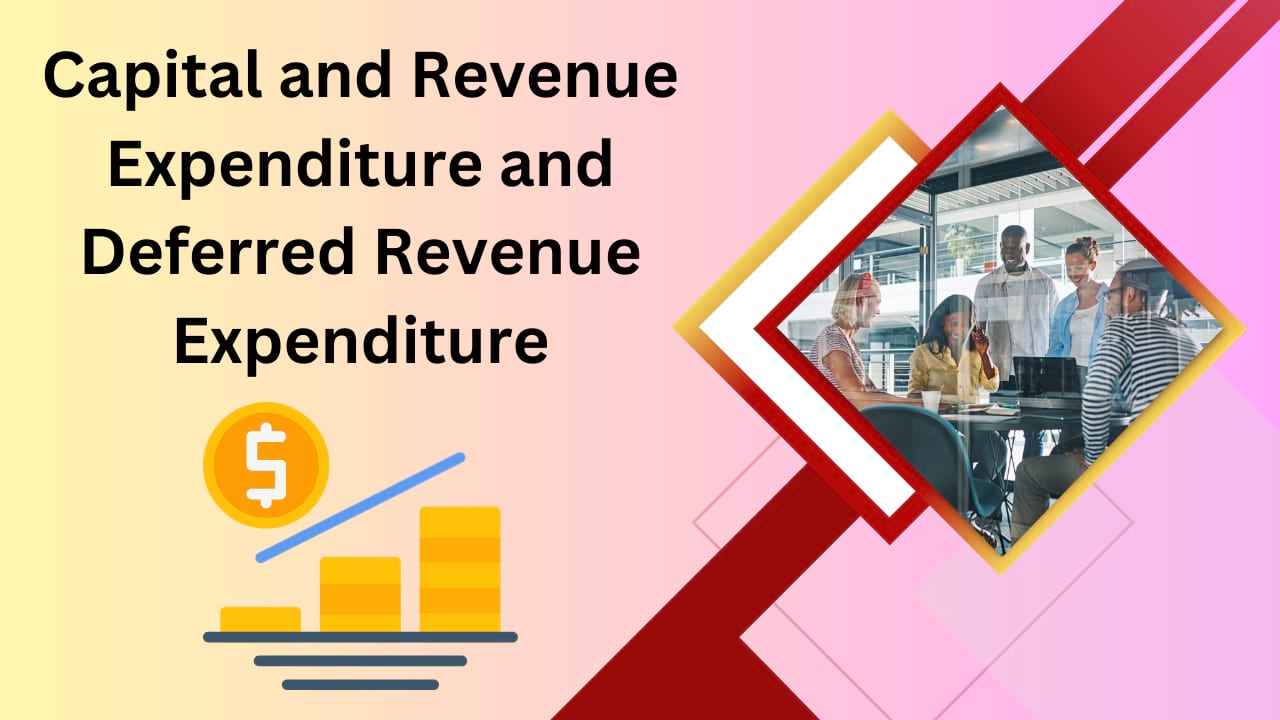Capital and Revenue Expenditure and Deferred Revenue Expenditure. Find Everything You want to know about Capital and Revenue Expenditure. Complete Guide of Capital and Revenue Expenditure. Find the Difference between Capital and Revenue Expenditure. What is Capital Receipt and Revenue Receipt? Here we are providing all information related to Capital and Revenue Expenditure. Recently we also provided Basic Principles and Golden Rules of Accounting. Must Read How to Read or Analyse a Balance Sheet.
If you like this article then please like us on Facebook so that you can get our updates in the future ……….and subscribe to our mailing list ” freely “
Quick Links
Capital and Revenue Expenditure
Capital Expenditure
Capital Expenditure is that expenditure which is incurred
a) For acquiring or bringing into existence an asset or advantage of an enduring benefit or
b) For extending or improving a fixed asset or
c) For substantial replacement of an existing fixed asset. The benefit of such expenditure is going to accrue for more than one year. Examples of capital expenditure include the cost of land and building, plant and machinery, furniture and fixtures, etc. Such expenditure normally yields benefits which extend beyond the current account period
Revenue Expenditure
Revenue Expenditure is that expenditure which is incurred for maintaining Productivity or earning capacity of a business. Such expenditure yields benefits in the current accounting period. Examples of revenue expenditure include office and administrative expenses such as Salaries, Rent, Insurance, Telephone Expenses., Electricity Charges, etc.
Deferred Revenue Expenditure
Deferred Revenue Expenditure is an expenditure that yields benefits that extend beyond a current accounting period, but relatively a short period as compared to the period for which a capital expenditure is expected to yield benefits. Such expenditures should normally be written off throughout 3 to 5 years. Examples of such, expenditures include heavy AdvertisingCompaign Research and Development Expenditure. You may also like the Acid Test Ratio or Quick Ratio.
Difference between Capital and Revenue Expenditure
Capital Expenditure
1) It is incurred for acquiring fixed assets for use in the business.
2) It increases the earning capacity of the business.
3) The benefits of capital expenditure extend to years beyond which it is incurred.
4) It is shown in the balance sheet in the form of assets.
Revenue Expenditure
1) It is incurred to run the business.
2) It does not increase the capacity of the business
3) Usually the benefit is consumed in the period in which it is incurred except in the case of deferred revenue expense. It is taken to the trading or Profit and Loss A/c of the concern.
Capital Receipts and Revenue Receipts:
Capital receipts are the receipts from non-trading transactions like the sale of fixed assets. issue of share capital. raising of loans etc. These receipts are shown in the balance sheet. Capital receipts other than sale Proceeds of assets. Create a liability. Revenue receipts are the receipts obtained in codes of normal trading operations e.g. sale of goods, interest income, etc. These receipts are shown in trading and Profit and Loss A/c. These receipts do not create any liability. Must Check Steps to Locate Errors.







